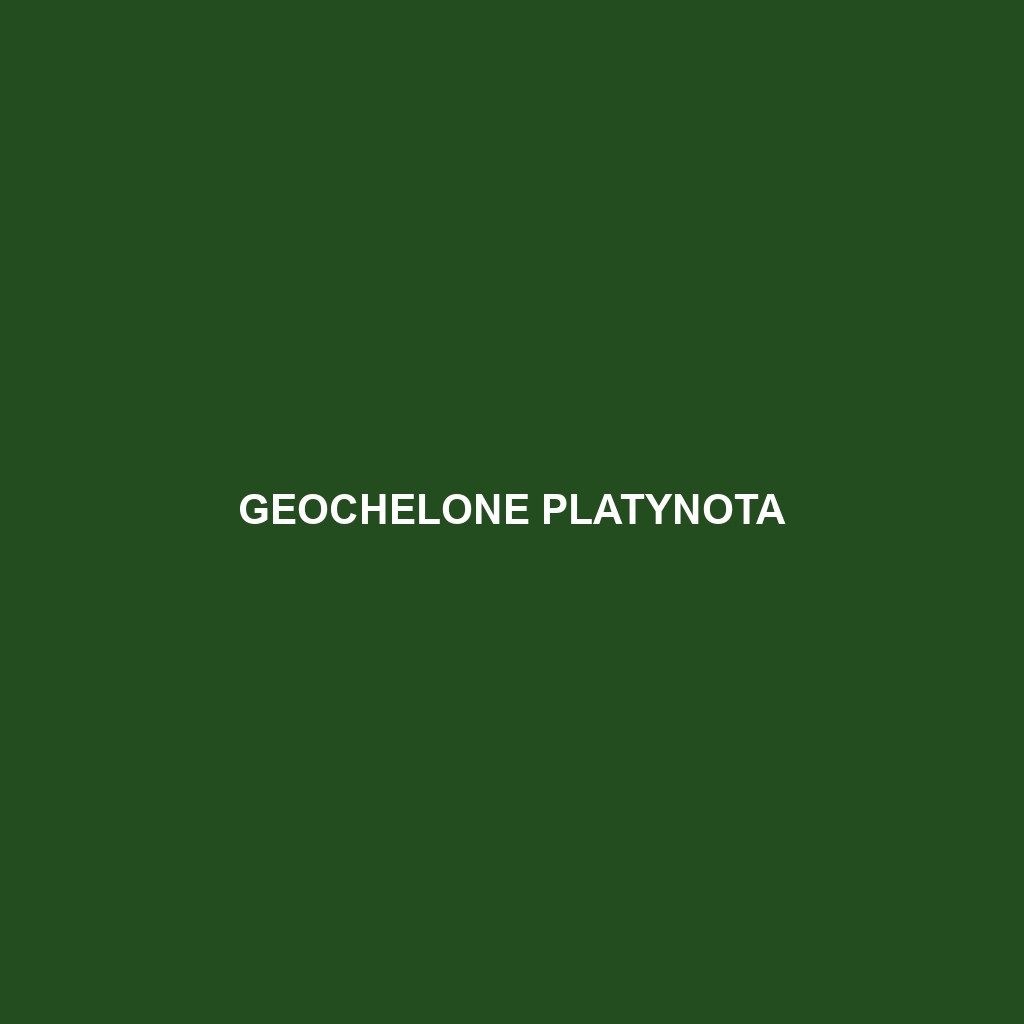Common Name
Geochelone platynota
Scientific Name
Geochelone platynota
Habitat
Geochelone platynota, commonly known as the Burmese star tortoise, primarily inhabits the tropical and subtropical regions of Southeast Asia, particularly in Myanmar. This species thrives in a range of environments, including dry and moist savannas as well as tropical rainforests. The warm climate of these areas, characterized by high humidity and occasional rain, is essential for the tortoise’s survival. These tortoises often prefer open areas where they can bask in the sun, as well as regions with abundant vegetation, which serves both as shelter and food. Conservation challenges, such as habitat destruction due to agriculture and urbanization, continue to threaten their natural environments.
Physical Characteristics
The Burmese star tortoise is easily recognized by its distinctively beautiful shell, which is high-domed and covered with star-like patterns that radiate from the center. Adult Geochelone platynota typically reaches a size of about 30 to 40 cm (12 to 16 inches) in length, though some individuals may grow larger. The coloration of the shell ranges from yellow to dark brown, with the star patterns being particularly striking. Adult tortoises display a characteristic build with strong, robust limbs adapted for a terrestrial lifestyle. Their head is relatively small, and they possess a beak-like mouth with a sharp edge suitable for grazing on various types of vegetation.
Behavior
Geochelone platynota exhibits a range of fascinating behaviors that highlight its adaptability to its habitat. These tortoises are primarily diurnal, with most of their activities taking place during the day. They are known to be solitary creatures but can occasionally be observed basking in groups during sunny weather. The tortoises exhibit a slow and deliberate mode of movement, using their limbs effectively for both locomotion and climbing. During the mating season, which typically occurs during the warmer months, males engage in vocal displays and physical interactions to court females. Observations indicate that these tortoises can also display territorial behaviors, particularly among competing males.
Diet
As an herbivore, Geochelone platynota primarily feeds on a varied diet rich in plant material. Their diet consists mainly of grasses, leaves, fruits, and flowers found in their natural habitat. They have a preference for high-fiber vegetation, which aids in their digestion and overall health. Feeding typically occurs both in the morning and late afternoon when temperatures are milder. This tortoise relies on its beak-like mouth to nip off bites of food, and it has a highly effective digestive system that allows it to extract nutrients efficiently from fibrous plants.
Reproduction
The reproductive cycle of Geochelone platynota begins with the mating season, which typically occurs from late spring to early summer. Males engage in courtship displays that involve vocalizations and physical posturing. Following successful mating, the female carries the eggs for around 60 to 90 days before laying them in a nest dug into the ground. Generally, between 3 to 15 eggs are laid, and incubation occurs in the warm sand. After hatching, the young tortoises are independent and must fend for themselves, relying on their innate behaviors to survive in the wild.
Conservation Status
Geochelone platynota is currently listed as endangered and faces severe threats from habitat loss, poaching, and the illegal pet trade. Conservation efforts are being undertaken to protect their natural habitats and reduce illegal hunting. Organizations are working with local communities to promote awareness and implement protection programs. However, challenges, such as insufficient resources and enforcement, make these conservation efforts imperative and urgent.
Interesting Facts
One fascinating aspect of Geochelone platynota is its longevity, with some individuals living over 100 years in captivity. They are also known for their unique behavioral adaptations, such as their ability to use their shells for thermoregulation. During hot weather, these tortoises will burrow into sandy areas to cool down. Their striking appearance has made them popular in the pet trade, which inadvertently contributes to their decline in the wild.
Role in Ecosystem
As a herbivore, Geochelone platynota plays a crucial role in its ecosystem by aiding in seed dispersal and promoting plant biodiversity. By feeding on various types of vegetation, these tortoises help maintain the balance of plant populations within their habitats. Furthermore, their grazing habits contribute to the growth of grasses and other flora, supporting the overall health of their environment. In addition to being a part of the food web, their role is significant, making them a potential keystone species in their native ecosystem.
